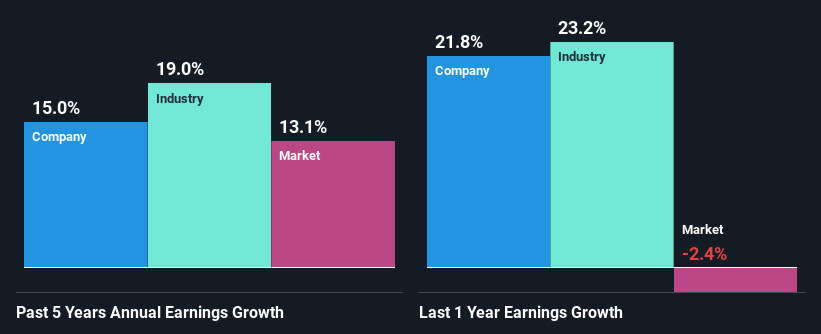Microsoft’s (NASDAQ:MSFT) stock is up by 2.1% over the past month. Given its impressive performance, we decided to study the company’s key financial indicators as a company’s long-term fundamentals usually dictate market outcomes. Specifically, we decided to study Microsoft’s ROE in this article.
Return on Equity or ROE is a test of how effectively a company is growing its value and managing investors’ money. In other words, it is a profitability ratio which measures the rate of return on the capital provided by the company’s shareholders.
See our latest analysis for Microsoft
How To Calculate Return On Equity?
The formula for return on equity is:
Return on Equity = Net Profit (from continuing operations) ÷ Shareholders’ Equity
So, based on the above formula, the ROE for Microsoft is:
33% = US$88b ÷ US$268b (Based on the trailing twelve months to June 2024).
The ‘return’ is the yearly profit. That means that for every $1 worth of shareholders’ equity, the company generated $0.33 in profit.
What Is The Relationship Between ROE And Earnings Growth?
So far, we’ve learned that ROE is a measure of a company’s profitability. We now need to evaluate how much profit the company reinvests or “retains” for future growth which then gives us an idea about the growth potential of the company. Generally speaking, other things being equal, firms with a high return on equity and profit retention, have a higher growth rate than firms that don’t share these attributes.
Microsoft’s Earnings Growth And 33% ROE
Firstly, we acknowledge that Microsoft has a significantly high ROE. Second, a comparison with the average ROE reported by the industry of 14% also doesn’t go unnoticed by us. This likely paved the way for the modest 15% net income growth seen by Microsoft over the past five years.
Next, on comparing with the industry net income growth, we found that Microsoft’s reported growth was lower than the industry growth of 19% over the last few years, which is not something we like to see.
The basis for attaching value to a company is, to a great extent, tied to its earnings growth. It’s important for an investor to know whether the market has priced in the company’s expected earnings growth (or decline). This then helps them determine if the stock is placed for a bright or bleak future. What is MSFT worth today? The intrinsic value infographic in our free research report helps visualize whether MSFT is currently mispriced by the market.
Is Microsoft Efficiently Re-investing Its Profits?
Microsoft has a healthy combination of a moderate three-year median payout ratio of 26% (or a retention ratio of 74%) and a respectable amount of growth in earnings as we saw above, meaning that the company has been making efficient use of its profits.
Besides, Microsoft has been paying dividends for at least ten years or more. This shows that the company is committed to sharing profits with its shareholders. Our latest analyst data shows that the future payout ratio of the company over the next three years is expected to be approximately 22%. As a result, Microsoft’s ROE is not expected to change by much either, which we inferred from the analyst estimate of 28% for future ROE.
Summary
On the whole, we feel that Microsoft’s performance has been quite good. Specifically, we like that the company is reinvesting a huge chunk of its profits at a high rate of return. This of course has caused the company to see a good amount of growth in its earnings. The latest industry analyst forecasts show that the company is expected to maintain its current growth rate. Are these analysts expectations based on the broad expectations for the industry, or on the company’s fundamentals? Click here to be taken to our analyst’s forecasts page for the company.
Have feedback on this article? Concerned about the content? Get in touch with us directly. Alternatively, email editorial-team (at) simplywallst.com.
This article by Simply Wall St is general in nature. We provide commentary based on historical data and analyst forecasts only using an unbiased methodology and our articles are not intended to be financial advice. It does not constitute a recommendation to buy or sell any stock, and does not take account of your objectives, or your financial situation. We aim to bring you long-term focused analysis driven by fundamental data. Note that our analysis may not factor in the latest price-sensitive company announcements or qualitative material. Simply Wall St has no position in any stocks mentioned.







